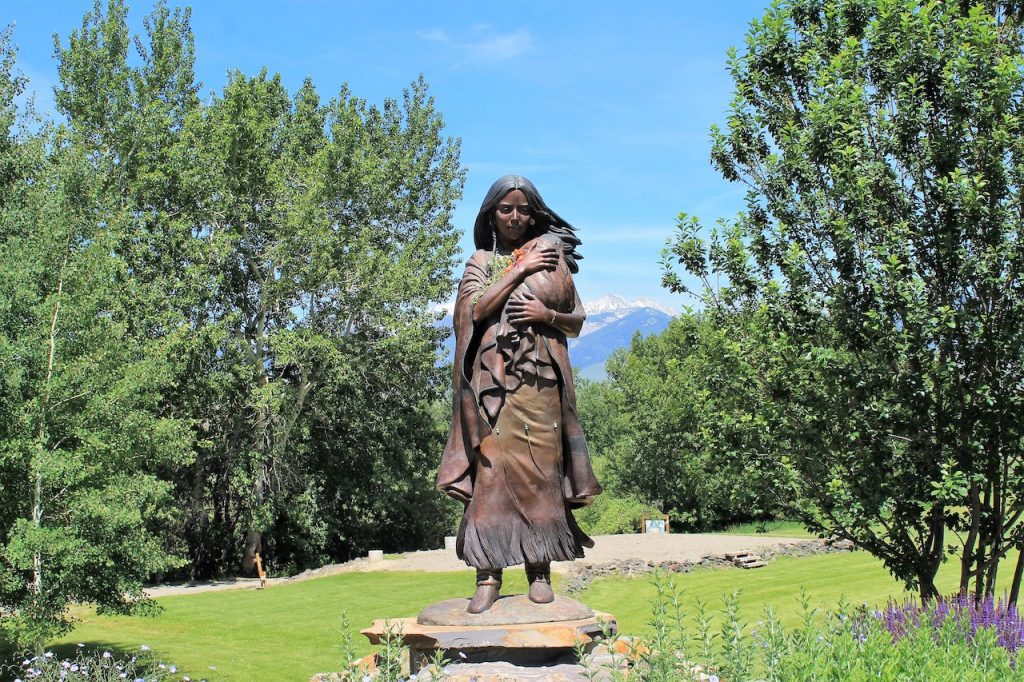Sometimes parents pass more than just genetics on to their children. Sometimes they pass on passions.
Take my mother and I for example. There are a few subjects my siblings, father and I know not to get my mother started on unless we are prepared to engage in a conversation that could last anywhere from one to five hours. One of those subjects is the Lewis and Clark expedition.
It is a funny thing, but when something fascinates someone you love, it mysteriously begins to fascinate you too.
Because of my mother’s giddy enthusiasm for that time in history where Thomas Jefferson tossed a group of explorers into America’s newly purchased Louisiana territory and wished them luck, I know more about the expedition than the average history major. I, too, have learned to love learning about it.
My mother also taught me to be a strong woman, so naturally I instantly latched onto Sacagawea as my favorite member of the expedition. Who better to honor for Women’s Month than the woman who helped guide a group of American men across half of what would become the continental United States?
Scholars don’t know very much about Sacagawea’s early life. According to History.com, Sacagawea was from the Shoshone Native American tribe, a tribe nestled in the Rocky Mountains in present-day Idaho. The rival Hidatsa tribe kidnapped her, brought her to their settlement in present-day North Dakota, and kept her as a slave.
When Sacagawea was a young teenager, French fur trader Charbonneau either purchased her or gambled for her and added her to his small collection of wives. Lewis and Clark hired Charbonneau and Sacagawea as translators, knowing they would want to be able to communicate with both the Hidatsa and Shoshone.
One of the members of the expedition spoke French, so he could speak to Charbonneau who could pass the message along to Sacagawea in Hidatsa. She could translate from Hidatsa to Shoshone.
Charbonneau and six-months-pregnant Sacagawea set out with the expedition. Barely a month later, the boat Sacagawea was on almost blew over in a storm and the young, pregnant woman remained calm and saved crucial supplies and notes by snatching them out of the water. Charbonneau, on the other hand, freaked out.
Needless to say, Lewis and Clark had learned which of the two to rely on in a crisis.
She continued to provide invaluable aid to the expedition as she helped guide them along their path, find edible or medicinal plants and deescalate tensions with the Native American tribes they encountered along the way.
In the midst of all this, she gave birth to her baby, a boy whom Charbonneau named Baptiste.
After the expedition reached its destination at the Pacific, the little family trekked with the expedition all the way back to present-day South Dakota.
Without Sacagawea, it is highly unlikely the Lewis and Clark expedition would have completed its mission to explore, document and map the new American west. In this way, she helped shape American history.
This founding mother passed away in 1812 at about 24 years old. Fortunately, the members of the expedition – especially Clark – insisted on keeping her legacy alive, and today she is one of the most remembered and celebrated historical women in America. There are statues made in her honor as well as a postage stamp and a $1 coin.
Sacagawea inspires me to make the most out of the toughest situations by working hard and maintaining incredible dignity under pressure. That is a valuable lesson for anyone, and I’m glad that listening to my mother’s gleeful history rants led me to it.
Bowman is the opinion editor. Follow her on Twitter.

گزینه ها
March 17, 2020
Oh yeah this is my favorite article